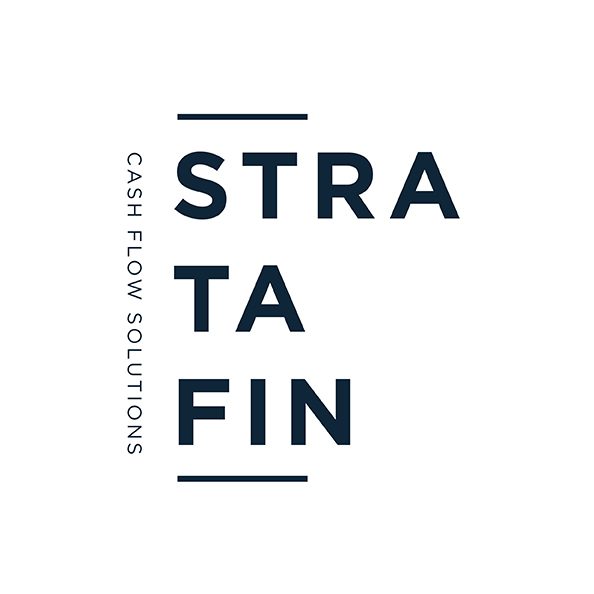A question we often get asked is whether sectional title levies expire or prescribe. To answer this question, we need to look at recent case law and digest what prescription actually means in the Community Schemes industry.
What is prescription?
Prescription is a concept whereby a debtor’s liability to pay a specific debt is extinguished as a result of the passing of a prescribed time period. Simply put, when the levy debt expires or prescribes, the debtor is no longer under any obligation to pay it.
What legislation is applicable?
The Prescription Act 68 of 1969 (“the Act”) sets out that contractual and delictual debts (or any other liability) extinguish after three years from the date on which the debts become due. A debt becomes due when the creditor can identify the debtor and the facts from which the debt arose.
How does prescription apply to levy debt?
Many members of bodies corporate who are in arrears with their levies raise prescription as a defense in court when the body corporate institutes a claim for the payment of the arrear levies. It is important to note here that section 17(1) of the Act states that prescription can never be raised mero moto by the court of law (or by the Community Schemes Ombud Service), and as such it only becomes a factor once raised by a defendant or debtor (in terms of section 17(2) of the Act).
There are circumstances where prescription periods are delayed or interrupted. Prescription is delayed when a creditor is a juristic person and a debtor is a member of the governing body of that juristic person or the debt has become the object of a dispute in arbitration proceedings. The prescription period will run as normal, but the three-year period is extended until one year after the situation ceases to exist.
Prescription will interrupt by an acknowledgment of the debt by the debtor, for example, if the debtor pays part of the debt to the creditor before prescription, or a summons to institute proceedings for the repayment of the debt is sent to the debtor.
Sections 3 and 13 of the Act are of most import when it comes to the operation of prescription as a defense to limit levy debt.
Section 3: Completion of prescription postponed in certain circumstances
(1) If-
(a)…
(b) the person in favour of whom the prescription is running … is a member of the governing body of a juristic person against whom the prescription is running; and
(c) the period of prescription would, but for the provisions of this subsection, be completed before or on, or within three years after, the day on which the relevant impediment referred to in paragraph (a) or (b) has ceased to exist, the period of prescription shall not be completed before the expiration of a period of three years after the day referred to in paragraph (c).
Section 3(1)(b) of the Act effectively states that prescription is postponed. If the person in favour of whom the prescription is running is a member of the governing body of a juristic person against whom the prescription is running the period of prescription would, but for the provisions of this subsection, be completed before or on or within three years after, the day on which the relevant impediment referred to has ceased to exist.
Section 13: Completion of prescription delayed in certain circumstances
(1) If-
(e) the creditor is a juristic person and the debtor is a member of the governing body of such juristic person; or
(f) the debt is the object of a dispute subjected to arbitration; or
(h) … and
(i) the relevant period of prescription would, but for the provisions of this subsection, be completed before or on, or within one year after, the day on which the relevant impediment referred to in paragraph (a), (b), (c),(d), (e), (f), (g) or (h) has ceased to exist, the period of prescription shall not be completed before a year has elapsed after the day referred to in paragraph (i).
Section 13(1)(e) of the Prescription Act 68 of 1969 states that the completion of prescription will be delayed. If the creditor is a juristic person and the debtor is a member of the governing body of that juristic person the relevant period of prescription, but for the provisions of this subsection, be completed before or on or within one year after, the day on which the relevant impediment referred to has ceased to exist.
What does the case law say on sectional title levies expiring?
The Kwazulu-Natal High Court unreported case of Reddy v Body Corporate of Greenwood Village Case No AR 412/09 was an appeal against the decision of a court a quo, whereby the Magistrates dismissed the special plea of prescription raised by the appellant and found that the claim lodged by the respondent against the appellant had not prescribed. The Magistrate found that a respondent is a juristic person and therefore prescription did not apply to the respondent as a body corporate. The Magistrate further found that the matter ought to have been referred to arbitration. The appellant appealed to the High court on the whole judgment.
The facts of the case were that the appellant (Reddy), being a registered owner of a unit in the scheme, was a member of the body corporate. The body corporate sued Reddy in the court a quo on a claim based on levy arrears due and payable as of 1 November 2003. Reddy failed to pay the levies that were due as of 30 November 2005 in the amount of R144 285, 32. Reddy’s defense in the court a quo was that a large portion of the levy debt had prescribed and that any amounts prior to 2002 had prescribed. The court a quo only had to consider the issue of prescription and decided that the body corporate’s claim had not prescribed.
Counsel for Reddy argued that the body corporate is not a juristic person, and referred to sections 3(1)(b) and 13(1)(e) of the Act. In support of these submissions, counsel referred to sections 36, 37, and 38 of the Sectional Titles Act 95 of 1986 (the “ST ACT”) and submitted that in terms of those provisions a body corporate is empowered to perform certain functions and has certain powers. Specifically, he referred to section 36(6) which sets out that a body corporate has perpetual succession and is capable of suing and being sued in its name. Despite these provisions, he submitted that a body corporate is not a juristic person in that it is not a separate entity distinct from its members. He submitted that it is not separate in the sense that if for instance the body corporate is unable to pay its debts the members are held liable for the unpaid debts of the body corporate, and is therefore not a separate legal entity from its members. He then referred to section 47(1) of the ST Act which provides that:
“If the creditor of a body corporate has obtained judgement against a body corporate, and such judgement, notwithstanding, the issue of a writ remains unsatisfied, the judgement creditor may without prejudice, to any other remedy he may have, apply to the court which gave him judgement, for the joinder of members of the body corporate in their personal capacity as joint judgement debtors in respect of the judgement debt and, upon such joinder the judgement creditor may recover the amount of the judgement debt still outstanding from the said members on a pro-rata basis in proportion to their said quotas or a determination made in terms of section 32(4)…”
He conceded that the body corporate has rights and powers; has perpetual succession and is capable of suing and being sued in its name, but he submitted that if a body corporate is not separate from its members it cannot really be classified as a juristic person. He could not provide support or authority for this proposition.
Counsel was confronted by admissions made by Reddy in her plea in the court a quo where she admitted the body corporate was a legal person. Counsel attempted, but failed to distinguish between a legal and juristic person and was forced to concede that the terms mean one and the same thing.
Counsel finally conceded, as the only issue to be decided, that a body corporate was a juristic person envisaged in section 13(1)(e) of the Act, and for the purposes of the ST Act. In light of these concessions, the Judge did not consider the respondent’s arguments. Therefore the appeal was dismissed.
On the matter of the referral to arbitration, the Judge found that the decision of the Magistrate should be set aside, and an order be made referring the matter back to the Magistrate in order to afford the parties the opportunity to address her on this particular issue. It was ordered that the appellant bear the costs of appeal.
So, do sectional title levies expire?
The crucial question that arises is who is considered to be “a member of the governing body” for purposes of the Act, and its application to bodies corporate? Simply put, are the members of the body corporate or the trustees elected by the body corporate to act as the executive of the body corporate considered to be “the governing body”?
In order to establish who is considered the governing body for the purposes of prescription we need to look at what the legislation says in this regard. In terms of section 2(1) of the Sectional Titles Schemes Management Act 8 of 2011 (the “STSM Act”) a body corporate is deemed to be established for the scheme with effect from the date on which any person other than the developer becomes a registered owner of a unit in the scheme. All owners of units in that scheme become members of that body corporate. Section 2(3) of the STSM Act states that any member of the body corporate ceases to be a member thereof when such member ceases to be an owner of a unit in the scheme.
Section 2(4) of the STSM Act sets out that a body corporate must be designated as the “body corporate”, and must have the name and number allocated and shown on the registered sectional plan for that scheme. This unique designation is used in all formal documents and is the cited name for the purposes of forming locus standi in court proceedings.
In terms of section 2(5) of the STSM Act, the body corporate is, subject to the provisions of the STSM Act, responsible for the enforcement of the rules and for the control, administration, and management of the common property for the benefit of all owners.
In terms of section 2(7) of the STSM Act, the body corporate has perpetual succession and is capable of suing and being sued in its corporate name in respect of
(a) any contract entered into by the body corporate;
(b) any damage to the common property;
(c) any matter in connection with the land or building for which the body corporate is liable or for which the owners are jointly liable;
(d) any matter arising out of the exercise of any of its powers or the performance or non-performance of any of its duties under the STSM Act or any rule; and
(e) any claim against the developer in respect of the scheme if so determined by special resolution.
Section 3 of the STSM Act sets out a detailed list of functions of the body corporate. More specifically, section 3(1)(t) of the STSM Act states that the body corporate must fulfill the function in general, to control, manage and administer the common property for the benefit of all owners.
Section 4 of the STSM Act sets out a detailed list of powers of the body corporate. More specifically, section 4(i) of the STSM Act states that the body corporate has the power to do all things necessary for the enforcement of the rules and for the management and administration of the common property. Section 5 of the STSM Act further sets out a detailed list of additional powers of the body corporate.
The body corporate must elect a group of trustees annually at the AGM to act as the body corporate’s duly elected representatives. PMR 7(1) states that a member may nominate any person for the office of trustee, and the trustees are elected by the members of the body corporate at the AGM in terms of PMR 17(6)(j)(viii). In terms of PMR 6(4)(g) the trustees are removed from office by ordinary resolution of a general meeting of owners, provided that the intention to vote on the proposed removal was stated in the notice calling the meeting. The body corporate therefore have the ultimate power to elect and remove trustees from office.
The trustees perform the executive function of the body corporate and are in a fiduciary relationship to each member of the body corporate as set out in section 8 of the STSM Act. They mainly function to ensure that the day-to-day functions of the body corporate are executed. In terms of section 7(1) of the STSM Act the functions and powers of the body corporate must, subject to the provisions of the STSM Act, the rules and any restriction imposed or direction given at a general meeting of the owners of sections, be performed and exercised by the trustees of the body corporate holding office in terms of the rules.
In this regard, it is important to note two things. In the first place, the body corporate give directions or impose restrictions referred to in section 7(1) of the STSM Act read with PMR 17(6)(m). The body corporate could therefore impose restrictions on the trustees in regard to spending on legal fees or place directions on them to not initiate legal proceedings without their consent. This could obstruct or delay the action available to the body corporate in levy debt collection in equal if not more extreme ways than a trustee could obstruct the levy debt collection. In the second place, section 10(2) of the STSMA allows the body corporate to amend management or conduct rules by unanimous and special resolution, respectively. Ultimately, the body corporate has the power to change the rules that empower the trustees to execute their powers and functions.
Bodies corporate are a unique form of juristic person established by legislation. They cannot be compared to companies. Section 2(6) of the STSM Act specifically states that the provisions of the Companies Act 71 of 2008 does not apply in relation to the body corporate. The trustees are not the same as directors, and members are not the same as shareholders.
In an article titled “Is a Body Corporate insulated from prescription of levy debts owed by its members?”, Fausto Di Palma, of Sectional Title Solutions (Pty) Ltd and Adv Viviana Vergano, Johannesburg Bar, make the important point that when the Prescription Act 68 of 1969 came into operation on 1 December 1970, sectional title bodies corporate did not yet exist, and the legislature may not have contemplated the interplay between the prescription provisions so enacted in 1970, and the body corporate’s members’ debts owed to it, as the first Sectional Titles Act 95 of 1986 Sectional was only promulgated on 30 June 1971 and only came into operation on 30 March 1973.
Based on these submissions, read with the statutory provisions relating to the legal status, powers, and functions of the body corporate, it is clear that the body corporate is the ultimate governing body of the juristic body that is the body corporate. Therefore, the term ‘body corporate’ and ‘governing body’ are synonymous in nature given the practical and unique operation of a body corporate in the sectional title environment. Therefore, the body corporate is the governing body within the meaning of the Act.
As a result, we are of the opinion that section 3 and 13 of the Act is applicable to bodies corporate, and there is no period for which prescription is running and then delayed. Prescription will only be delayed when a member ceases to be a member of the body corporate. In this regard section 15B(3)(a)(i)(aa) of the ST Act requires that all monies owing/debts in respect of the unit must have been paid, or provision has been made to the satisfaction of the body corporate for the payment thereof before the transfer can be registered in the name of a new owner. This has the effect that unit owners cannot exit membership to the body corporate without all monies owing being paid. Therefore, the levy debts of members should rarely prescribe. This interpretation protects all members of the body corporate from any prescription defense raised and accords most closely with the intent of the legislature to avoid mischief by governing bodies of juristic persons in the operation of prescription.
Hopefully, the uncertainty in regard to the prescription of levy debts will be considered in the Supreme Court of Appeal when the Body Corporate of Sante Fe v Bassonia Four Zero Seven CC (Case No: 35593/2018) [2019] ZAGPJHC 54 (6 March 2019) is heard on appeal. This court case did not deal with section 3 or 13 of the Act, but will hopefully address these issues, and finalise any uncertainty in this regard.
Written by Dr. Carryn Melissa Durham of Stratafin













